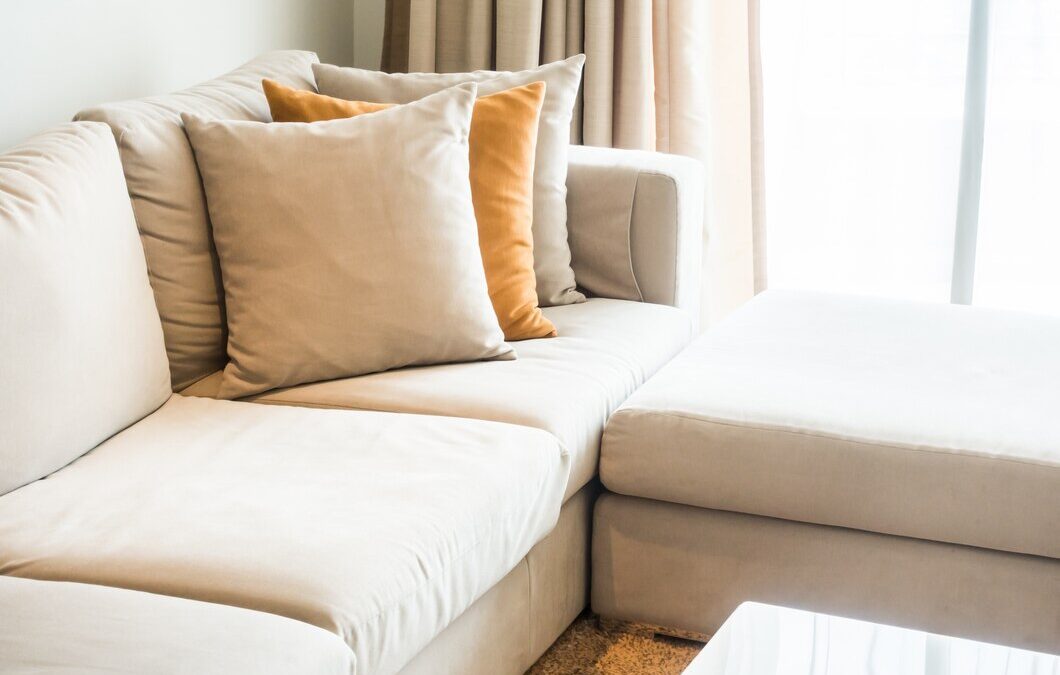Indoor air quality significantly impacts our health and comfort. Many people are unaware that the cleanliness of their upholstery plays a crucial role in maintaining healthy air inside their homes. Sofas, chairs, and other upholstered furniture can harbor dust, allergens, and other air quality pollutants. Over time, these contaminants accumulate and can lead to various health issues, especially for those with allergies or respiratory conditions.
Proper upholstery cleaning removes these harmful particles, creating a cleaner and healthier indoor environment. While regular vacuuming helps somewhat, professional upholstery cleaning offers a deeper cleanse that eliminates dust mites, pet dander, pollen, and other allergens. By understanding the connection between upholstery and air quality, we can take proactive steps to improve our living conditions.
Professional upholstery cleaning revitalizes your furniture’s appearance and significantly contributes to a healthier home. Well-maintained upholstery ensures the air you breathe is free from common allergens and pollutants. This article will explore how thorough upholstery cleaning can enhance indoor air quality, detailing the types of allergens commonly found in upholstery, the cleaning process, and the long-term health benefits of maintaining clean furniture.
Understanding the Connection Between Upholstery and Air Quality
Upholstery plays a significant role in your home’s air quality. The fabrics on sofas, chairs, and other furniture items can trap dust, pollen, and other airborne particles. These particles can accumulate over time, contaminating indoor air pollution. Regularly sitting or moving on upholstered furniture can release these particles back into the air, making it challenging to maintain a clean and healthy environment.
Proper upholstery cleaning helps to minimize these pollutants, improving the overall air quality in your home. Removing trapped dirt and allergens ensures that the air you and your family breathe is cleaner and healthier. It’s essential to consider upholstery cleaning as part of your routine home maintenance to create a safe living space, especially for individuals with allergies or respiratory issues.
Common Allergens Found in Upholstery and Their Effects
Several allergens commonly found in upholstery can negatively impact your health. Dust mites are the most prevalent, thriving in the warm, humid conditions often present in upholstered furniture. Their waste products can cause allergic reactions, such as sneezing, coughing, and itchy eyes. Pet dander is another frequent allergen, especially in homes with cats or dogs. It can cling to the furniture fabric, causing issues for those allergic to animals.
Mold spores can also be found in upholstery, particularly in damp or humid areas. They can cause respiratory problems, skin irritation, and other health issues. Pollen from the outside can settle on furniture and contribute to indoor allergies. Regular cleaning helps reduce these allergens, making your home a healthier place to live. Identifying and addressing these common allergens is crucial for maintaining optimal indoor air quality.
Steps in Professional Upholstery Cleaning to Improve Air Quality
Effective upholstery cleaning requires a systematic approach to remove all allergens and pollutants. The first step is a thorough inspection to identify specific areas of concern, such as heavily soiled spots or mold growth. We then use high-powered vacuums to remove loose dirt and dust from the fabric. This initial vacuuming is crucial to prevent these particles from becoming airborne during cleaning.
Next, we apply specialized cleaning solutions that penetrate deep into the upholstery fibers, breaking down built-up grime and allergens. The type of solution used depends on the fabric type and the level of soiling. Following this, hot water extraction or steam cleaning is performed to lift and remove the dissolved dirt and cleaning agents. This method effectively eliminates dust mites, pet dander, and mold spores. Finally, we thoroughly dried the upholstery to prevent moisture-related issues like mold growth or fabric damage.
The Long-Term Health Benefits of Regular Upholstery Cleaning
Regular upholstery cleaning can have significant long-term health benefits for your household. Consistently removing dust, allergens, and pollutants from your furniture helps reduce the frequency and severity of allergic reactions. This can be particularly beneficial for people with asthma or other respiratory conditions, as cleaner air reduces the likelihood of triggering symptoms.
Furthermore, maintaining clean upholstery contributes to a more hygienic home environment. By reducing the presence of mold spores and bacteria, you lower the risk of infections and other health issues. Over time, maintaining a clean home can lead to fewer doctor visits and a generally healthier lifestyle. Regular professional cleaning improves the immediate air quality and supports ongoing health and well-being for everyone in the home.
Final Thoughts
Improving indoor air quality through professional upholstery cleaning is essential in creating a healthier and more comfortable living environment. Removing common allergens and pollutants can significantly reduce respiratory problems and allergic reactions within your home. Understanding the connection between clean upholstery and air quality highlights the importance of regular maintenance.
Investing in professional upholstery cleaning ensures that every piece of your furniture is thoroughly cleaned and maintained. This makes your home look and feel fresher and provides long-term health benefits for your family. With these steps, you can breathe easier knowing that your indoor air quality is in top condition.
For top-quality upholstery cleaning services that enhance your indoor air quality, contact us today at (757) 523-1175. Let our team of experts help you create a healthier home environment.




